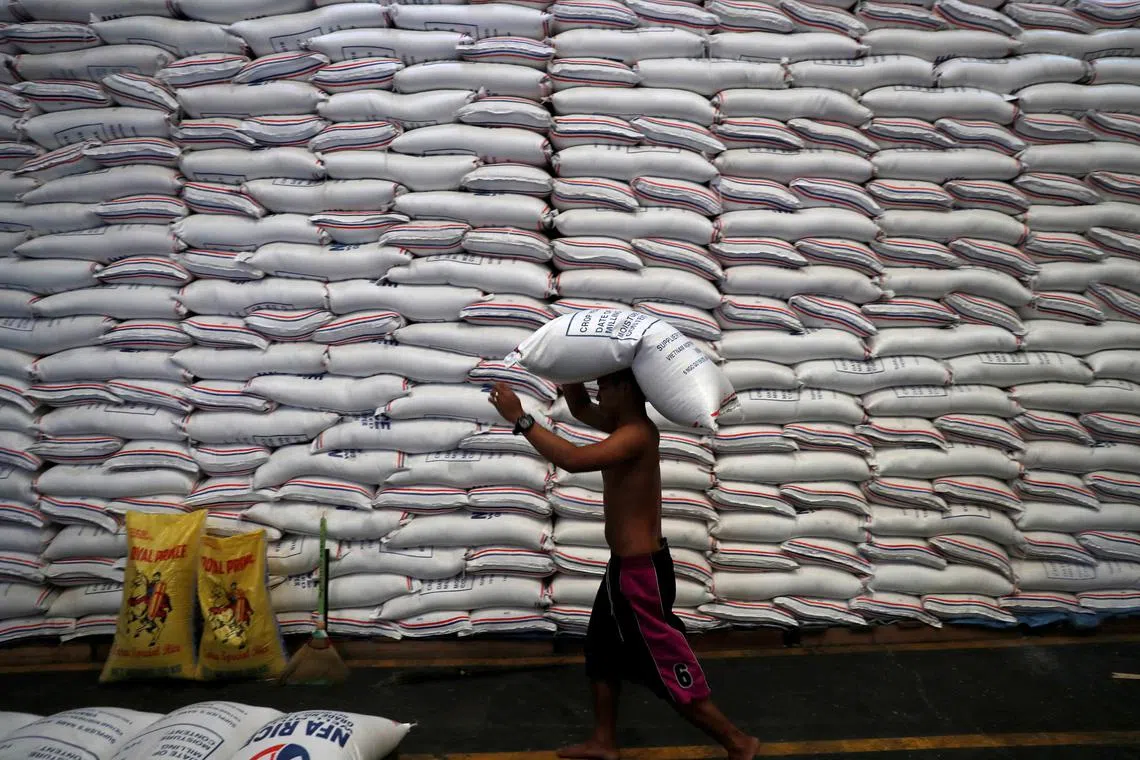Philippines cracks down on rice price manipulation
Sign up now: Get insights on Asia's fast-moving developments

Local and imported well-milled rice are currently sold at between 47 and 56 pesos in the capital region.
PHOTO: REUTERS
Follow topic:
MANILA - The Philippines announced price ceilings for rice on Friday to protect consumers, as the rising cost of the national staple probably caused August inflation to accelerate for the first time in seven months.
One of the world’s biggest rice importers, the South-east Asian nation is cracking down on domestic price manipulation at a time of rising pressure from events such as the Russia-Ukraine conflict, India’s export ban and unpredictable oil prices.
President Ferdinand Marcos Jr approved a maximum price set at 41 Philippine pesos (S$1) per kilogram, while the price for well-milled rice was set at 45 pesos per kilogram, with the mandated ceilings to remain in effect until it is lifted by Mr Marcos, who is also the country’s agriculture minister.
Local and imported well-milled rice are currently sold at between 47 and 56 pesos in the capital region, while local and imported regular-milled are priced at 42 to 55 pesos as at Aug 30, the Agriculture Ministry said.
Despite a steady supply of rice, the authorities have reported a “widespread practice of alleged illegal price manipulation, such as hoarding by opportunistic traders and collusion among industry cartels in light of the lean season”, the presidential office said in a statement.
The country is also feeling price pressures from global events such as the Russia-Ukraine conflict, India’s ban on rice exports and the unpredictability of oil prices, it added.
A farmers’ group welcomed the move.
“There is no reason for any price increase these past weeks as there is no rice shortage in the country,” the group Sinag pointed out in a statement.
Mr Marcos earlier this week ordered the authorities to double efforts to hunt down rice hoarders and take steps to curb rice inflation, which hit 4.2 per cent in July, the highest since 2019.
The Philippines is one of the world’s biggest importers of the grain and its retail rice prices climbed further in August, with some varieties surging as much as 25 per cent in some markets in and around the capital.
The Philippines’ rice supply for the second half will reach 10.15 million tonnes, of which 7.2 tonnes is the expected yield from local output.
Along with imports and existing inventory, it will allow the country to end the year with stocks good for 64 days of domestic demand.
“Monetary policy has little ability to control food inflation, but the Bangko Sentral ng Pilipinas may need to act if second-round effects become prominent and inflation expectations are de-anchored,” ANZ economists said in an Aug 25 note, using the official name of the central bank. REUTERS

